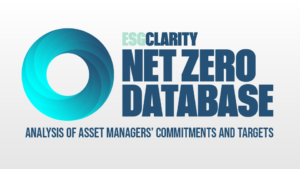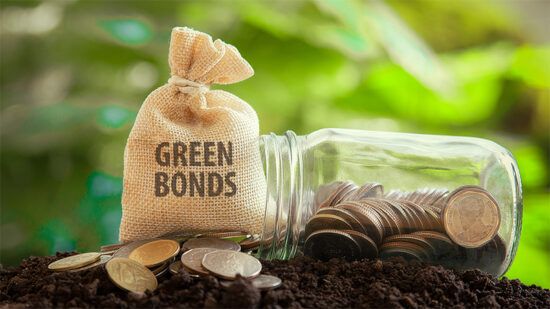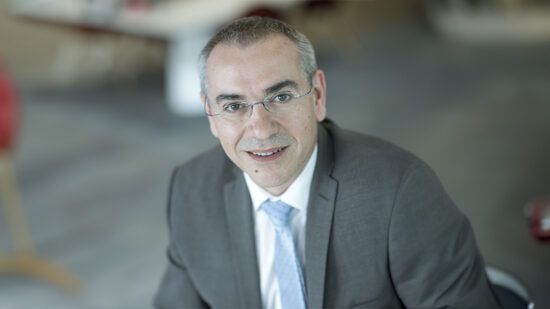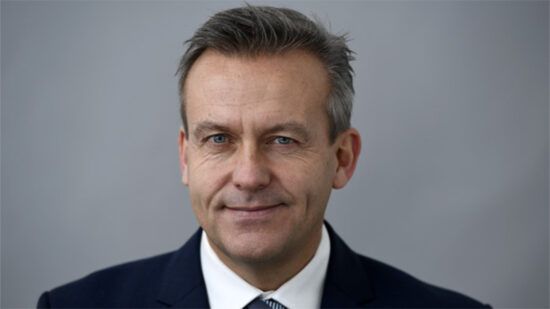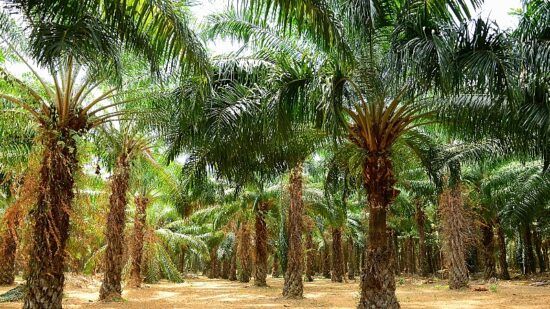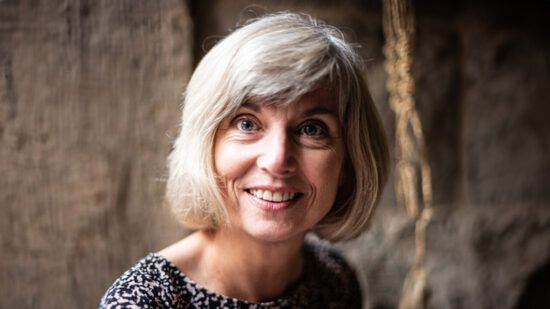In this Green Dream episode, Olly Hughes, director of forestry at Gresham House, gives an update on the International Sustainable Forestry Coalition, which he says is “gaining momentum” and is being invited to contribute thoughts to COP and Climate Week among other international events.
He also discusses the delay to the EU Deforestation Regulation, driving toward his mantra of real-world change, and how COP30 being hosted in Brazil could be the catalyst for higher-level conversations on deforestation.
Watch the full video interview above and read the transcript below.
MN: Welcome back to the Green Dreams video series. My name is Michael Nelson, I’m the senior reporter at PA Future. And, with me today, I have Olly Hughes. He’s the managing director of forestry at Gresham House. Great to have you here, Olly.
OH: Hi, there.
MN: So first question I want to ask you about was around the International Sustainable Forestry Coalition, which Gresham House were one of the founding members of. What successes have you had with that so far? And how has that coalition evolved?
OH: So, look, we’re really excited about the development of the ISFC. Fundamentally, the ISFC has been established to create a voice for sustainable, productive forestry globally. Within the last 18 months, we’ve built up a membership of some 15 members covering around 16.5 million hectares of forestry over 35 countries. So, we’ve built up a really meaningful voice of global forestry, and we are really already starting to be a voice for the sector, we’re being invited into a wide array of differing environments and meetings. At the COP meetings, the Climate Week meetings, we’re starting to have a voice.
As a group and as an entity, we’ve got two core thrusts. One is to really create that voice, to be a champion for sustainable, productive forestry. To be a champion for the benefits and the opportunities of timber and timber production, as opposed to just forestry and afforestation. So, that’s the first strand, and that message is getting through.
I would say the second track is really about focusing on a number of core areas. One being carbon accounting and the benefits of forestry over and above the pure tree growth. And that’s really within, for example, the lock-up of carbon within timber products and the value of that from a sustainability perspective. And then secondarily, the accounting of that carbon. So, you know, how and where, and there are a variety of different methodologies in carbon accounting, and we want to make sure that we’re presenting and promoting what we believe to be the most suitable methods. And there may be multiple methods, we don’t think there’ll necessarily be one.
And then secondarily is to really focus in on more specific areas of interest to us. So carbon accounting, the EUDR and other such things. I think it’s made a really great start, it’s creating some really strong momentum, we’re looking to continue to build the membership, but the core is around making sure that we’ve got that voice that has real reference and relevance to the counterparties that we’re talking to.
MN: And how are people investing in sustainable forestry to deal with the carbon emissions of their portfolios?
OH: There’s a number of different strands of investment within the forestry sector. We at Gresham House really focus on forestry and sustainable, productive forestry for the purposes of growing timber, number one. That timber growth and timber production has multiple benefits, first of all, in the absolute growth of timber and the sequestration of carbon, which is an important driver.
Number two, though, is then looking at how that forestry, that timber, is utilised within the wider circular economy. And so we are really focusing around, and promoting, the concept of a circular bioeconomy. The growth of that timber to utilise that timber into multiple different sources. And we’re seeing timber continue to be used in traditional housebuilding and traditional forms of fencing and of furniture and chipboard, and a whole array of things where that fibre is locking up carbon for long periods of time. But more excitingly as well, we’re starting to see wood and wood fibre get used in a wider array of environments, such as chemicals, and even aviation fuel. And so there’s an array of opportunities.
Forestry from the perspective of investment gives you, really, a double opportunity. One is the sequestration of that carbon. And then two, is that long-term transition to a sustainable economy through the replacement of highly intensive carbon materials such as concrete, steel and oil products. Generally, all of that can be replaced with timber, with wood fibre. And so when an investor is looking to that, we say, look, fundamentally, you should be looking at this from a perspective of investment to deliver you a long-term stable return. But you’re getting these additional benefits that sit on top of that.
MN: And earlier on you mentioned the EU Deforestation Regulation. Last November, that was delayed for a year, or the implementation of it was delayed for a year. I was wondering whether you could explain a little bit more about what that regulation entails, and also some of your thoughts around the delay.
OH: Yeah. So, the Deforestation Regulation, in its essence, is very simple, and I’m not sure we disagree with the essence of it is that all products and commodity-based products that are sold within Europe now have to demonstrate that they have not been generated through deforestation, which is the transition of forest land into farmland or an alternative land. And that in itself is a very good ambition, so I don’t think we disagree with that.
The reality is the practicality of that comes into how do you generate and demonstrate that, and what is a definition of deforestation within that definition? And productive forestry and harvesting trees by definition requires you to cut those trees down. So, you know, there’s some ambiguity there. And then you’ve then got to look through products that have multiple sources of fibre in them to show where that fibre is coming from, and to be able to demonstrate and prove that that fibre is coming from an area which has not been as a result of deforestation. It’s complicated. It’s not impossible, but it’s complicated. And I think where we had got to in that regulation and the implementation of that regulation was that people weren’t ready for delivering that outcome. And so, you know, I think sensibly, what has occurred is that there has been a delay That delays is giving us time to work through how we solve some of these issues.
So, really, the issue is how we are going to implement that, how we are going to work through the clarification and the understanding of that, and then the reporting of it and the evidencing of it. And so, look, it’s not an impossible task, but it’s a challenging task. And you just have to conceptualise a particle board made of fibre from multiple different sources, you know, recycled virgin timber, all going into one particulate board for a kitchen. How can you demonstrate where a each of these fibres has come from within that particular particulate board? It’s a very difficult challenge, not impossible. But what we need time is to work through how we deliver that. And, you know, and that’s, I think, a global challenge for people that are looking to export into the EU at the moment.
MN: Do you think a year will be long enough?
OH: Well, it’s better than nothing. And I think we’ve got a lot of work to do. And that’s, again, with entities like the ISFC and the large global players are working through how we we deal with that and we deliver with that. But certainly from from Gresham’s perspective, we get the concept, we get the ambition. But like all of these things, the devil is in the detail of how you actually deliver it and how you actually regulate it, and how you actually assure that the outcome is delivering one of my big mantras, real-world change. You can create regulation, you can create carbon markets, you can create all of these ancillary opportunities. But what is actually delivering real-world change and making our processes and our management processes and systems and operations more sustainable, less carbon-intensive, on a permanent basis?
MN: And so, speaking of those are international collaborations, COP30 is being held in Brazil this year, and obviously that’s the home of the Amazon, which is kind of like a poster child for the the fight against deforestation. I was wondering whether you expect that to be the catalyst for more high-level conversations around deforestation?
OH: Absolutely. And certainly, this is a core focus of the ISFC. We want to be there and provide a voice for ensuring that 80 forestation is an important topic, but how productive forestry, managed forestry, can be a solution to that. It must not be seen as the problem, it must be seen as a solution to deal with the ongoing increased demand for wood fibre and wood. And we’ve talked about this previously, but globally, we are expecting a fundamental increase in the demand for wood and timber and wood fibre over the next two to three decades. We’re forecasting 2.7 times, the World Bank three to four times, you know, huge increases in demand. The only way we’re going to manage that and provide that sustainably is through productive plantation forestry, sustainable productive plantation forestry, such that we are not then relying upon deforestation and leaning in on historic deforestation to counter that increase in supply.
And so, within that messaging, within that debate at COP30, we’ve got to make sure that that voice is heard and that there is a sensible solution for balancing this. And, it’s a rather old boring analogy, but the pendulum of production versus sustainability of nature-based investment, and that pendulum swings backward and forwards, and historically, yes, it has been the wrong side. It’s been too intensive. The pendulum has swung back to now pure nature-based, biodiversity-based opportunity. And I think what we’ve got to do is get that pendulum back to the middle, where we’re balancing the need for long-term sustainable material production. But that must not be at the cost of nature-based investment needs an enhanced sustainable investment and regenerative land use, and they can mix.
But we’ve just not got to think in a binary manner. We’ve got to say: “How do we balance the two?” And the danger is it will go one way. And certainly, if you look in the UK as a as a singular market that we’re active in, we import 80% of our timber. 80%. Now, if we continue on the trajectory that we are on, we are going to lower the level of the national stock of timber, which means that we are going to offshore even more of our importing, even more of a timber production. And that offshoring is then going to rely upon areas which we have less certainty over the provenance of that timber, less certainty over the biodiversity and nature-based management of that timber. So, we’ve got to be very careful that we don’t push that pendulum right the way across. We balance that, and each country takes its own responsibility in that.
MN: And I think we’ve probably got just enough time for our regular end question, which is, what is your favourite sustainable snack or drink? Has it changed since the last time?
OH: It has. And, I said porridge last time, I think. This time, it’s not really a snack – it’d be quite a big snack – but one thing I do really want to promote, and especially in the UK, is venison and eating venison. We have a significant amount of wild deer within our country, a surplus population, and it is a sustainable, low-fat, highly nutritious meat. We need to encourage people to eat more venison because there needs to be a natural balance within our ecosystem. And that balance is out of line. We have way too many deer within the UK. And so, there is an opportunity to make a nutritious, sustainable, very healthy snack in the form of venison. So, I would be promoting venison for the next 12 months.
MN: Great. Thank you very much. It’s been a pleasure chatting with you today.
OH: Likewise, thank you.


